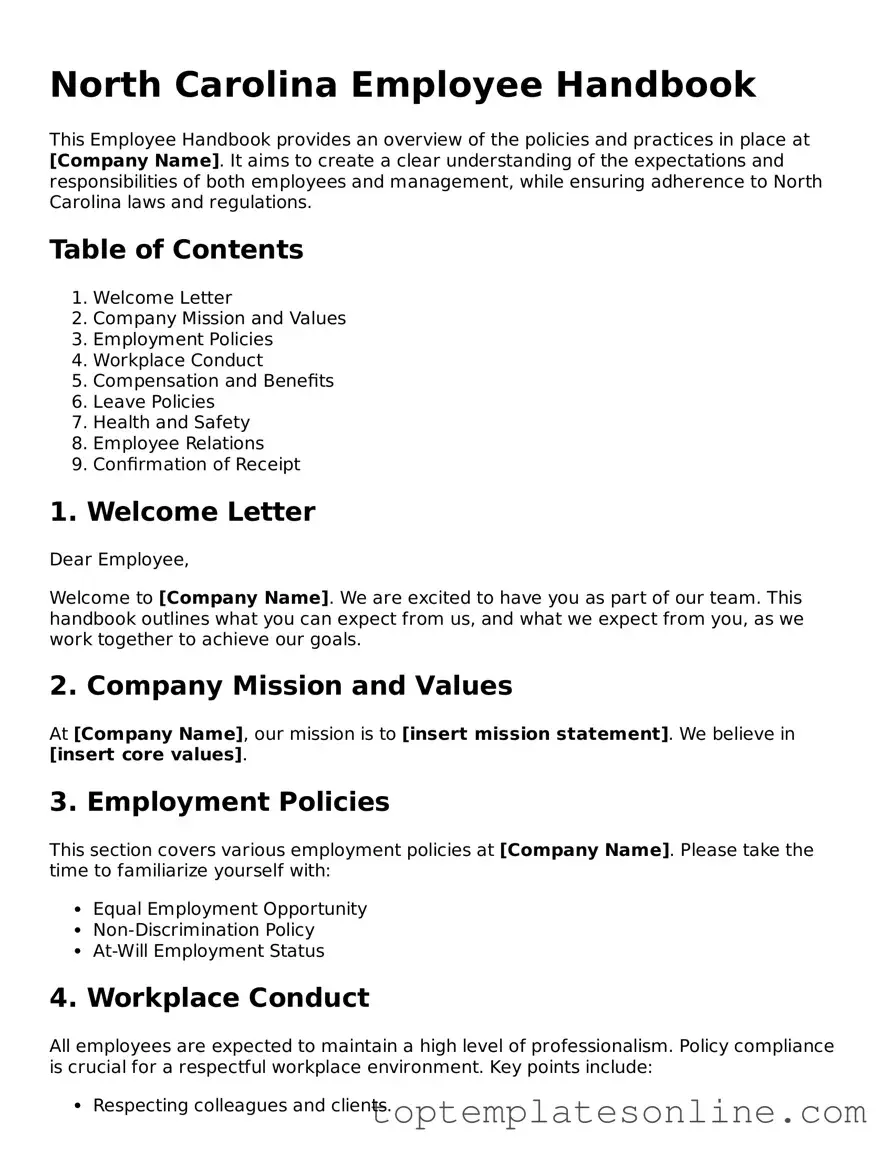Blank Employee Handbook Template for North Carolina State
The North Carolina Employee Handbook form is a crucial document that outlines company policies, procedures, and employee rights. It serves as a guide for both employers and employees, ensuring everyone understands their responsibilities and the workplace expectations. Having a well-structured handbook helps promote a positive work environment and can prevent misunderstandings.
Customize Employee Handbook Here
